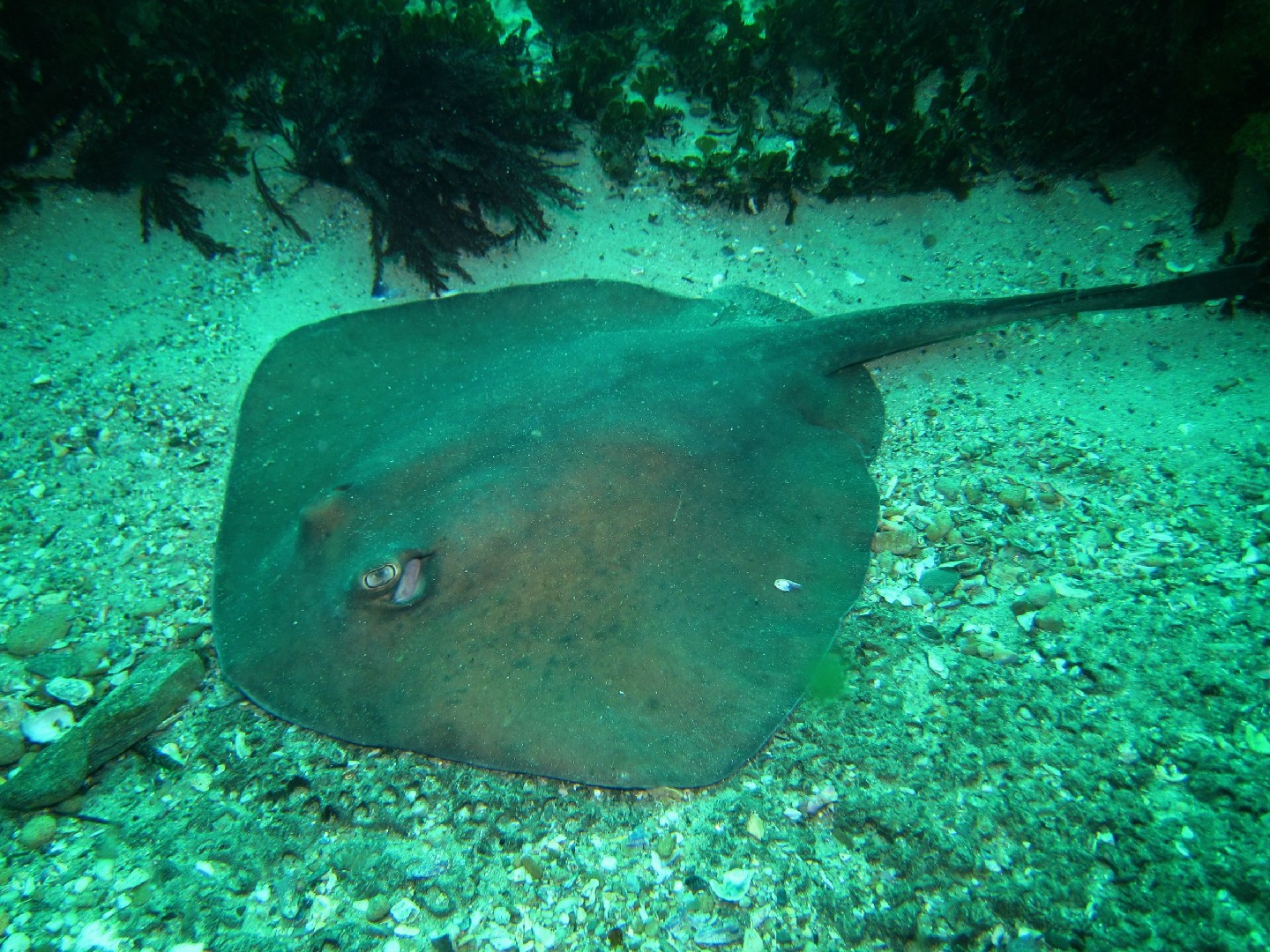Eastern shovelnose stingaree
A species of Shovelnose stingaree Scientific name : Trygonoptera imitata Genus : Shovelnose stingaree
Eastern shovelnose stingaree, A species of Shovelnose stingaree
Botanical name: Trygonoptera imitata
Genus: Shovelnose stingaree
Content
Description
 Photo By Taso Viglas , used under CC-BY-2.0 /Cropped and compressed from original
Photo By Taso Viglas , used under CC-BY-2.0 /Cropped and compressed from original Description
The pectoral fin disc of the eastern shovelnose stingaree is rounded in shape, wider than long, and thick at the center. The anterior margins of the disc are straight to gently convex, and converge at a blunt angle on the fleshy, non-protruding snout; the outer corners of the disc are broadly rounded. The medium-sized eyes are followed by larger comma-shaped spiracles with angular posterior rims and "tails" that curve down and forward to below the front third of the eyeball. The outer rim of each nostril is enlarged into a prominent, flattened lobe. Between the nostrils, there is a skirt-shaped curtain of skin with a deep midline furrow lined by papillae (nipple-like structures) and a deeply fringed posterior margin that overhangs the small mouth. The lower jaw conceals the upper and bears a dense patch of papillae. The floor of the mouth bears three papillae in the middle and one or two papillae near either corner. The teeth are blunt with oval bases, with those towards the interior and middle of the lower jaw becoming more triangular with serrated edges. They are arranged in a quincunx pattern, numbering around 22 upper and 24 lower rows. The five pairs of gill slits are S-shaped. The pelvic fins are modestly sized and roughly triangular; males have robust, tapering claspers. The smoothly tapering tail has a flattened oval cross-section at the base and ends in a lance-like caudal fin; it measures around three-quarters as long as the disc. Usually two serrated stinging spines, with the upper generally larger than the lower, are present atop the tail about halfway along its length. The tail lacks dorsal fins and fin folds. The skin is completely smooth. The dorsal coloration ranges from yellowish to dark grayish brown, which is darkest toward the midline and lightest towards the fin margins; some larger individuals also gain a smattering of fine black and beige spots. The underside is light-colored with a dark fin margins and sometimes irregular dark blotches on the abdomen. The tail is entirely dark past the base. This species reaches a maximum known length of 80 cm (31 in), making it the largest member of the genus and among the larger members of the family.
* Disclaimer: The judgment on toxicity and danger is for reference only. We DO NOT GUARANTEE any accuracy of such judgment. Therefore, you SHALL NOT rely on such judgment. It is IMPORTANT TO SEEK PROFESSIONAL ADVICE in advance when necessary.
Scientific Classification
Phylum
Chordates Class
Sharks and rays Order
Stingrays and relatives Family
Stingarees Genus
Shovelnose stingaree Species
Eastern shovelnose stingaree